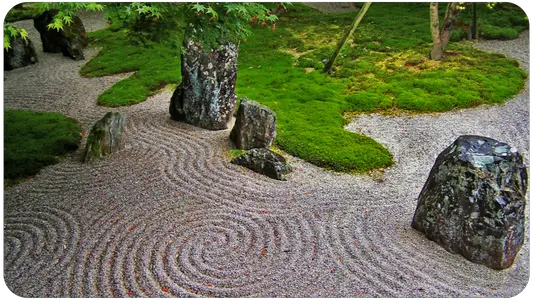The ten realms, ten worlds, or the theory of states of life, is a classification system present in beliefs of some schools of Buddhism that believe there are 240 conditions of life to which sentient beings are subject and which they experience at all times.
The popularization of the term is attributed to the Chinese sage Chih-i, founder of the Tiantai school of Buddhism, who argued that there is a "compenetration of the ten worlds."
The ten realms
The ten realms are traditional elements of Buddhist cosmology, consisting of four upper realms and six lower realms. They are derived from Bhavacakra, the Indian concept of the six realms of rebirth.
These realms or worlds can also be described by means of the degrees of enlightenment through which subjects pass. They have been translated to the Western world in various ways.
They are divided into the Six Realms (Chinese: 六道), followed by higher states of enlightened awareness leading to the Buddha state (or enlightenment). The six realms are that of hell (地獄 道), hungry ghosts or niggers (in Chinese: 餓鬼道), beasts (in Chinese: 畜生道), of titans or asuras (in Chinese: 修羅道), of humans (in Chinese: 人道), and lastly, heaven or the realm of the gods (in Chinese: 天道).
Above them are the four holy states: the shravaka (in Chinese: 声聞), the pratyekabuddha (in Chinese: 縁覚), the bodhisattva (in Chinese: 菩薩), and, the sixth realm, is the Buddha state or final enlightenment.
In some systems of cosmology, these states are perceived as distinct realms in which the inhabitant has to experience various forms of suffering to atone for karma. Practitioners of Shugendō, a Japanese Buddhist school, understand the ten realms as trials of discipline that a practitioner must pass or overcome in order to achieve a material or spiritual goal.
However, according to Chih-i's conceptualization of the "three thousand worlds in a single moment of life," they are not separate physical realms into which one can the subject be reborn, but realms of consciousness that are interrelated and contained within each other (Jp. jikkai gogu).
The Ten Realms are a conceptualization of the view of the Lotus Sutra, in the aspects of interconnectedness of phenomena and embodiment of dharma.
Three thousand worlds in a single moment
Each of the ten realms or worlds is contained within another, occasioning a "mutual possession of the ten realms" (in Japanese: Jikkai gogu). The subsequent hundred worlds are viewed through the lens of the ten tais (in Japanese: junyoze) and the three realms of existence (in Japanese: San-seken) to compose the three thousand realms of existence.
These hundred aspects of existence lead to the concept of "three thousand worlds [or realms] in a single moment" (in Japanese: Ichinen Sanzen).
According to this conception, the world of the Buddha and the nine realms of humanity are interpenetrable, there is no original "pure mind," and good and evil are mutually possessed.
This establishes a tendency toward immanence rather than transcendence. According to Nitiren, the three thousand realms in a single moment are practical and realizable in this life in the concrete world.
Understanding the classification
Some Japanese Buddhist traditions understand the ten realms as stages that are experienced in pilgrimages; and these are linked to various temples or, alternatively, to sites situated on sacred mountains.
More commonly, the ten realms theory and its broader concept of the "three thousand worlds of existence in a single moment" are a non-theistic interpretation of how a person is influenced by the cosmos and, simultaneously, of their potentiality in influencing the cosmos.
Some schools of Nichiren Buddhism believe that the Gohonzon devotional scroll is Nichiren's representation of the ten realms, and they often recite the nam-myoho-renge-kyo mantra so that attributes of Buddha's wisdom, courage, and compassion are evoked.





